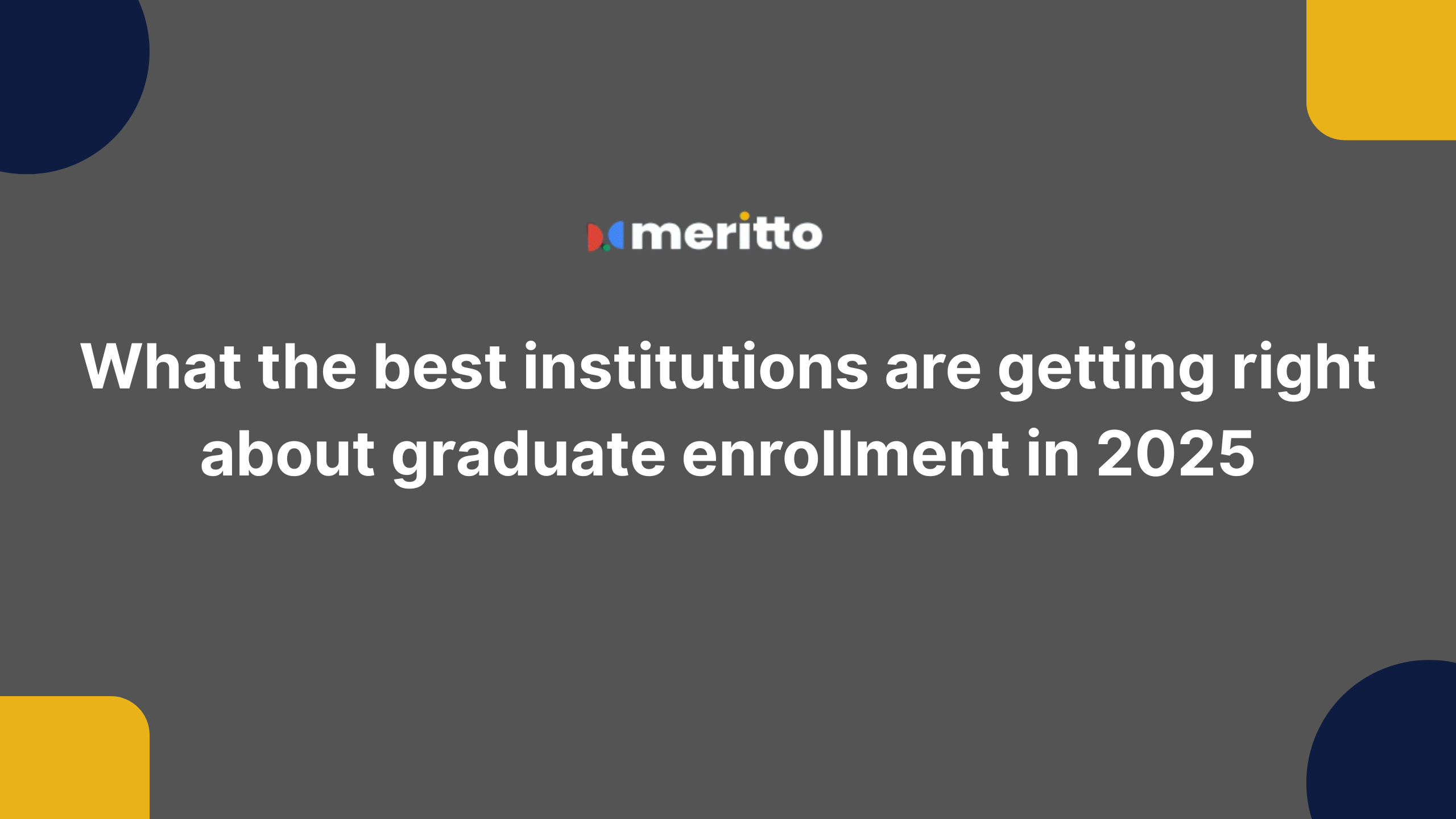Graduate enrollment in the U.S. isn’t what it used to be and that’s a good thing. The rules are changing, the student mindset is evolving, and the institutions that are thriving in 2025 are those that aren’t just keeping up, but leading the change.
While some universities are still doubling down on traditional playbooks, the best ones are rewriting them entirely. So what are these forward-thinking institutions doing differently? And more importantly, how can others follow suit? Let’s break it down.
They treat enrollment strategy as institutional strategy
At high-performing institutions, enrollment is no longer a siloed function. It’s a cross-campus priority that aligns with everything from academic planning to DEI initiatives to long-term financial sustainability.
Admissions leaders have a seat at the strategic table. They collaborate with marketing, faculty, alumni relations, and even career services to ensure that every decision — from program design to communication cadence reflects what today’s students need and expect.
They design with data, but deliver with empathy
Yes, data is critical. The best schools are using predictive analytics, intent data, and behavioral insights to target and engage the right-fit students. But they don’t stop there.
They know that behind every application is a real person with real anxieties, goals, and trade-offs. So they pair their data strategy with messaging that’s human, clear, and helpful. No fluff. No pressure. Just honest, supportive guidance. Because in 2025, empathy scales better than automation.
They reimagine the funnel as a flywheel
The traditional enrollment funnel, attract, apply, admit, enroll is losing relevance. Leading institutions are thinking more like experience designers. They treat prospects not as leads, but as future alumni. Every touchpoint, from a first website visit to the post-admit welcome, is part of a larger ecosystem built to drive not just conversion, but connection.
These schools are also leveraging current students and alumni as part of the process — not just for testimonials, but for real peer-to-peer engagement that builds community early.
They build for flexibility and relevance
Rigid, one-size-fits-all programs are a thing of the past. Students in 2025 are career shifters, side hustlers, international explorers, and lifelong learners. They want programs that reflect their path — not a linear one. Top institutions are responding by offering:
- Modular learning paths
- Stackable credentials
- Hybrid delivery models
- Real-world project-based learning
They’re not lowering academic standards. They’re raising the bar on relevance.
They prioritize belonging, not just branding
It’s easy to pour resources into digital ads, program brochures, and shiny rankings. But what today’s students crave is something deeper: the feeling that they belong.
Schools that stand out in 2025 are investing in authentic, inclusive experiences, from personalized communication and accessible onboarding to diverse student stories and active support communities. Because it’s not just about being seen, it’s about being understood.
They measure success beyond enrollment
Finally, the best institutions aren’t just chasing numbers. They’re looking at long-term impact: retention, graduation, career mobility, and alumni engagement. They understand that a strong start is only the beginning and that sustainable enrollment means designing systems that support students from inquiry to impact.
Final thoughts
Graduate enrollment is no longer just about filling seats, it’s about fueling futures. And in 2025, the most successful institutions are those that are courageous enough to adapt, invest, and lead with purpose.
If you’re ready to take a deeper dive into how institutions like yours are navigating these shifts, we’ve got something for you. Watch the full conversation from our latest #illuminateByMeritto webinar, featuring enrollment strategist Brett DiMarzo and global higher ed expert Shahbaz Siddiqui. Watch the full webinar here.




